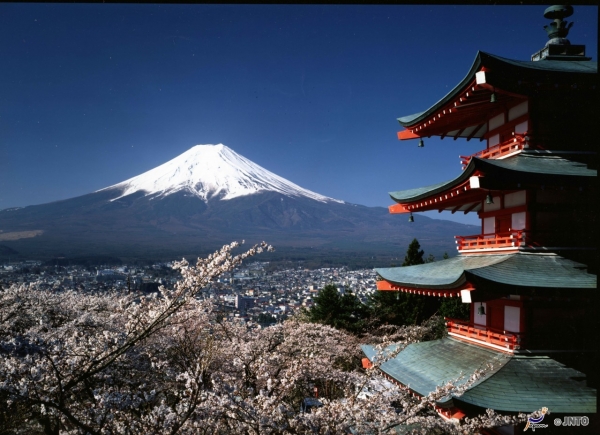What to do instead of climbing Mount Fuji

For the first time in at least half a century, the Shizuoka Prefectural Government has announced the cancellation of Mount Fuji’s hiking season in 2020 as a measure to curb the spread of COVID-19.
The dream of climbing Mount Fuji (or for the less adventurous, simply having a good view of it) sits at the top of the bucket lists of many travellers to Japan. But even if your next realistic chance to climb has been postponed to 2021, don’t be too quick to write off a visit to the area entirely—we’re here to answer a popular question that precedes the current crisis: what else is there to do at Mount Fuji, besides Mount Fuji?
For the uninitiated, Mount Fuji actually spans across the borders of two neighbouring prefectures, Yamanashi and Shizuoka. North of Mount Fuji, on the Yamanashi side, is the region of Fuji Five Lakes (富士五湖 Fujigoko)—aptly named after the five great lakes of the area. The largest and most popular of these five lakes is Lake Kawaguchi (河口湖 Kawaguchiko), which has direct bus and train lines to Tokyo and is widely popular as a onsen town from which you can view Mount Fuji.
Kawaguchiko

(Image credit: photoAC)
An unfortunate trade-off for being able to climb Mount Fuji in the summer, is that summer is regarded as the least popular season to view the mountain from afar. Much of the snowcap would have melted by now, leaving a rather plain-looking Mount Fuji. On top of that, hazy conditions are the most common during the summer months, so don’t set your hopes too high on snapping a picture-perfect shot this season. Regardless, there are a multitude of attractions and activities to choose from in Kawaguchiko, so you might as well make the most of the time you have here!
Escape the summer heat by Cave Diving!


(Image credit: photoAC)
Alright, so it’s not as dramatic as it sounds; there’s no spelunking or strenuous physical activity involved. Owing to Mount Fuji’s former volcanic activity, there is an underground network of lava tunnels snaking through Kawaguchiko, and some of which have been utilised by the locals for centuries. The most popular caves have fairly straightforward names, such as the Wind Cave, Ice Cave, and Bat Cave.
Perhaps a big appeal of visiting these caves is that they maintain an average temperature of 3°C throughout the year, even through Summer. The Wind Cave was once used as a natural refrigerator to store silkworms and seeds, while the Ice Cave stored brick walls of ice.
The caves can be accessed by bus from Kawaguchiko Station. The Omni Bus Green Line calls at the Bat and Wind Caves, while the Omni Bus Blue Line stops at the Ice and Wind Caves. All three caves are within walking distance of each other.
Chūreitō Pagoda

(Image credit: JNTO)
The backdrop of what is likely the most popular view of Mount Fuji, Chureito Pagoda (忠霊塔 Chūreitō) is a pagoda on the mountainside overlooking Fujiyoshida City. The pagoda is part of the Arakura Sengen Shrine (新倉富士浅間神社 Arakura Fuji Sengen-jinja) and was built as a peace memorial in 1963, nearly 400 steps up the mountain from the shrine's main buildings.
Arakura Sengen Shrine is a 10-minute walk from Shimoyoshida Station, which is 5 stops away from Kawaguchiko Station on the Fujikyu Railway Line.
Fuji-Q Highland

(Image credit: photoAC)
One of the most popular theme parks in Japan, Fuji-Q Highland (富士急ハイランド Fujikyū Hairando), is well-known as an amusement park for thrill seekers as it holds several extreme roller coasters which held world records at the time of their construction. These include the world’s tallest roller coaster (1996), the Fujiyama; the world’s fastest (2006), the Dodonpa; and the world’s steepest (2011), the Takabisha – which drops at a whopping 121º angle.
The park is also famous for its anime-themed attractions and rides. Permanent attractions include the Evangelion World, Naruto × Boruto Fuji Hidden Leaf Village and Thomas Land. It also holds regular collaborations with popular franchises such as Fate/Stay Night and the Idolmaster, to name a few.
Fuji-Q Highland has its own train station on the Fujikyu Railway line, making it very accessible – it is only one stop from Kawaguchiko Station! Furthermore, there are special deals like this round-trip train pass from Shinjuku Station that includes a 1-day entry ticket available at only ¥7,700.
(Writers’ note: Fuji-Q Highland may observe partial or full suspension of operations due to the ongoing Covid-19 pandemic. Please visit the official website for the latest updates.)
Getting there
There are a few ways of getting to Kawaguchiko from Tokyo, including direct buses and trains. The route that I highly recommend would be the Fuji Kaiyu Limited Express. This Train departs from Shinjuku three times a day in the morning at 7:30, 8:30, 9:30 am, and will bring you straight to the Kawaguchiko region, stopping at all the train stations mentioned so far in this article!

(Image credit: JR Times / Afiq)
When taking this train or any other train on the Fujikyu railway, note that the Nationwide Japan Rail Pass cannot be used for the train segment past Otsuki Station, but the Tokyo Wide Pass can cover the entire length of the trip. The Tokyo Wide Pass costs ¥10,180 and can only be bought within Japan, with a validity of three days.
These are but a few things that you can do around the Kawaguchiko area. If you would like to learn more about the area, or have any burning questions to ask, drop by JAPAN RAIL CAFE to have a chat with our friendly Travel Communicators!
JAPAN RAIL CAFE
Address: 5 Wallich St, #01-20, Singapore 078883
Opening hours: 11am daily
(Travel Communicators' Desk temporarily closed due to COVID-19 restrictions)





